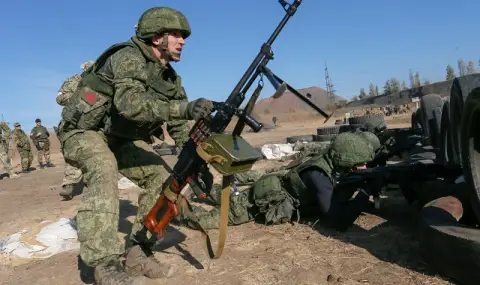Russia will not launch a new coordinated front-line offensive in eastern Ukraine this summer. This is what both Western analysts and the authorities in Kiev claim, writes the American publication Newsweek.
"For the time being, there is no question of a repetition of a large-scale offensive along the entire front line, as in February 2022," commented Andrey Yusov, spokesman for the Main Intelligence Department of the Ministry of Defense of Ukraine (GRU).
When Moscow launched its full-scale invasion of Ukraine in February 2022, the Kremlin quickly expanded its reach from parts of separatist-held Donetsk and Luhansk regions to northern and eastern Ukraine. Since 2014, Moscow also holds Crimea.
In the autumn of 2022, Ukraine regained territories, including in the northeastern part of Kharkiv Oblast, in a lightning counter-offensive.
However, Russia has been slowly but steadily seizing territory in eastern Ukraine, claiming the town of Avdeyevka in February 2024, and moving west in the following months. Moscow's troops are slowly closing in on the strategic defense city of Pokrovsk, and Ukraine is constantly reporting fierce clashes along this stretch of the front line.
On Sunday (August 4), the Russian Defense Ministry announced that its troops had captured Novoselovka Pervaya, a village west of Avdeevka and southeast of Pokrovsk.
In early May, Russia launched an offensive in the Kharkiv region. Ukraine has been quick to say that the opening of a new front is aimed at moving its vital resources away from hot spots to the east.
In late July, however, the Institute for the Study of War (ISW) said it was "unlikely that Russian forces would launch another summer offensive due to material and personnel constraints.
At the end of the month, Moscow was advancing with "local" efforts in the western part of Ukraine's Donetsk region, but "probably does not have the broader operational capabilities to conduct a separate renewed offensive operation in Donetsk region or elsewhere on the front this summer," the analysts said.
That assessment is broadly correct, says Nick Reynolds, research fellow in land warfare at the Royal United Services Institute (RUSI), a London-based think tank. But the situation is "fragile for both sides" and "very unpredictable", he thinks.
Analysts and officials say Moscow is waging a war of attrition, hoping to destroy Kiev's fighters and equipment stocks before the Kremlin exhausts its own resources.
Although Western intelligence indicates that Russia is receiving weapons from allies such as Iran, China and North Korea, Moscow quickly put its defense industry under martial law and relies on huge stocks of old Soviet equipment.
Russia's advance has been met with heavy casualties among its own personnel, and in recent months Ukraine has frequently reported that more than 1,000 of Moscow's fighters are wounded or killed daily. Kiev estimates that Russia is able to attract about 30,000 new recruits to its forces every month.
Ukraine receives significant aid from its Western partners, especially military equipment. But despite public statements about NATO's commitments to Kiev, there are mounting questions about the future delivery of military aid if Donald Trump wins the US election.
However, Ukrainian President Volodymyr Zelensky confirmed on Sunday that the F-16 fighter jets are now in Ukraine. Kiev hopes to use the advanced aircraft to repel Russia's efforts and strengthen its air defenses.
Reynolds suggested that a major Russian offensive would be more likely next year, although Moscow may try to conduct additional, smaller-scale operations before then. Offensives are usually carried out in the spring or summer, avoiding the rainy season, which occurs immediately after winter or in late autumn. Tanks and armored vehicles get bogged down in rough terrain.
Russian army embarks on a large-scale offensive? Not before the fall
The offensive has been met with heavy casualties, and in recent months Ukraine has frequently reported that more than 1,000 Moscow fighters are being wounded or killed daily
Aug 5, 2024 18:33 476
